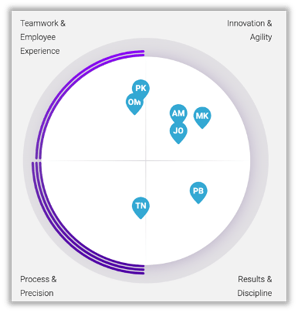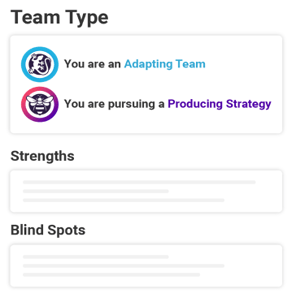Using PI Throughout the Employee Lifecycle: Maximizing Business Value
Did you know you can use PI throughout the employee lifecycle?
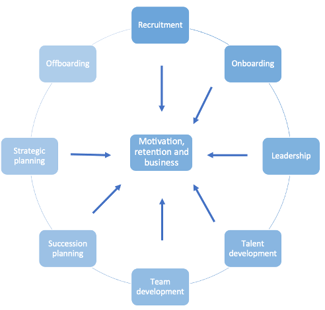 One of the great parts of the Predictive Index solution is that we can use PI as a red thread of data throughout the entire employee cycle, which creates continuity and a common language in your personnel processes.
One of the great parts of the Predictive Index solution is that we can use PI as a red thread of data throughout the entire employee cycle, which creates continuity and a common language in your personnel processes.
Using PI throughout the employee lifecycle can lead to better business results, increased engagement, and a stronger organizational culture.
In this blog, we will briefly describe and give inspiration about how you can use PI in the various processes. You are always welcome to contact us for further discussions about how you can best implement it in your organization!
PI & Recruitment
The PI data, along with collected information, will help you make informed and unbiased decisions about which candidate is best suited for the role.
Defining job targets
By objectively defining what is needed to do the job successfully, you increase your chances of hiring a person who fits and will be motivated in the job long term.
The PI Job Assessment will help your hiring team determine behavioral and cognitive benchmarks for jobs in your organization.
Job match selection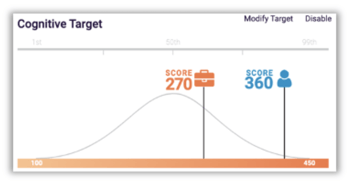
Objectively map candidates' natural drives and behaviors with the PI Behavioral Assessment.
Predict how quickly someone will learn the necessary skills for their new job by using the PI Cognitive Assessment.
Evaluate how well candidates' behavioral drives and cognitive abilities match the requirements for a specific role by using the match score function in the PI system.
Fit and gap interview
Use the match score to automatically generate objective and targeted interview questions to address any job fit gap. This makes the interview questions both more relevant and personal for the person on the other side, making sure we get the information we really need.
PI & Onboarding
Individualized onboarding
People have different drives and needs that greatly impact how they experience the onboarding and how they best learn and get into a job. It is therefore beneficial to tailor the new joiner’s onboarding after their drives and motivating needs, which you get with PI.
Everyone likes challenges, clarity, frameworks, etc. PI helps you to tailor to what degree the challenge should be, what kind of framework, etc.
Kickstarting the relationships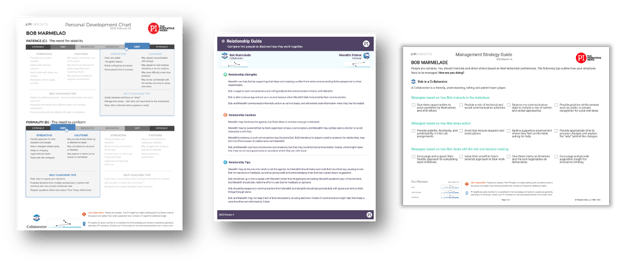
By using the reports from PI, the manager can gain insights into the new co-worker’s behavioral drives, allowing them to better understand the person and how to best lead and support them. During the onboarding, use the following reports as a base for dialogue and discussion:
- Relationship guide
- Management strategy guide
- Personal development chart
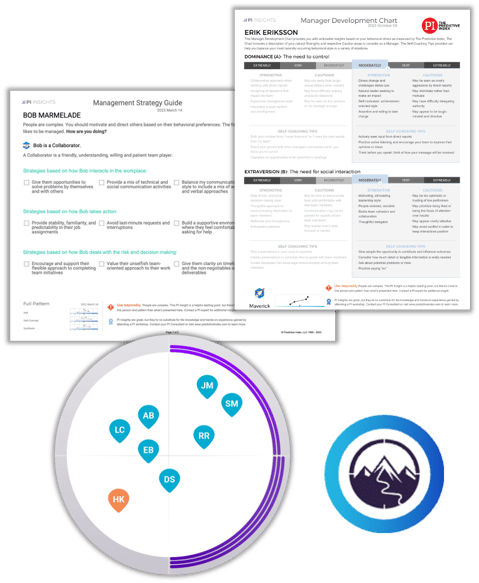 |
PI & LeadershipSelf-awarenessDevelop leaders by helping them understand their strengths, caution areas, how their natural behavior may affect their employees, and how to improve in their role. Tailored leadership – individual levelSupport leaders in engaging their employees by tailoring their leadership style to fit the needs of all their employees—not just the ones that think and act like them. Tailor communication, development plans, and reward systems to meet the needs and maximize the motivation for each specific team member. Tailored leadership – team levelGive leaders the tools to understand their team, built on the individuals in it. What their differences and similarities are, and how to collaborate and structure the teamwork. How to lead, communicate, and engage them as a team. Team insightsProvide the leaders with an understanding of their team as a whole. What does that combination of people mean for the team’s strengths and caution areas, also in relation to the team’s goals and deliverables. |
PI & Talent development
Increase self-awareness
Develop your employees by helping them understand their strengths, caution areas, and how others may perceive them. This will improve not only their collaboration with others but also help them work with their strengths and improve their caution areas, in time increasing their performance and motivation.
Personal development plans and coaching
You have personal development plans and coaching guides available for all employees in the PI system that you can use as a base for the development conversations. This helps the leaders to work with each employee’s personal development, based on their unique potential and position, and not just looking at KPIs.
Career planning and promotions
The employee’s self-awareness of their natural behaviors and what motivates them is crucial in their career planning. What type of career and positions would they like to develop into and what do they need to develop to succeed? If the organization has mapped and created job targets for positions, this process becomes even more efficient and optimized.
Just as in recruitment, PI is crucial for promotions, making sure that the person is the right fit for their next job.
When you promote someone, you need to make sure that they will stay motivated in the new role and that you know how to support and engage them. If the promotion is not a success, you risk losing them and the big investment you have already made in their career.
PI & Team developmentUnderstand each otherBy using PI’s Team Discovery, the leader and team members can gain a deeper awareness of how the individual’s strengths and cautions relate to the others on the team. Also understanding how similarities and differences affect both relationships, situations, and collaboration. The team’s strengths and challengesBased on extensive research, PI has created 9 different team types, creating awareness of the team’s strengths, and potential caution areas. Supporting the leader and team members to become a high-performing team. The team's prioritiesWith the help of the tool, the team also gets a visualization of how individuals and the team relate to strategic objectives and the tasks that need to be executed. Tangible actions for improvement and optimizationWith the above knowledge, the team can start planning and taking concrete actions for improvement and optimization, both by the team’s own discussion and by suggestions from the system. Securing that the newfound awareness leads to long-term benefits for the individuals and the team as a whole.
|
|
PI & Succession planning
Mapping out key positions
Review your organization's current and future needs. What are your business-critical roles and the competencies essential for these roles?
Creating job targets
Create job profiles using PI Job Assessment for these roles in order to determine the behaviors and cognitive abilities required for success.
Identify potential successors
Now you can compare the job target with the behavioral profiles and cognitive ability of your talent pipeline.
Start with the natural successors within the organization. With the help of PI, discuss what they need to develop and learn to become ready to take over.
If there are currently no natural successors, PI can help you identify the employees with the right drives and general cognitive ability levels needed in the future. This way you can create successors by identifying, developing, and training employees from more junior positions.
PI & Strategic planning
With PI on all our employees, we can start getting an overview of our people and teams on an organizational level. We can now understand where we are as an organization from a people perspective. The next question is where we want to go as an organization and what is required from a people perspective to get us there.
With this information we can make sure that we have the right talent infrastructure, meaning the right teams in the right places in our organization, to get us where we want to go.
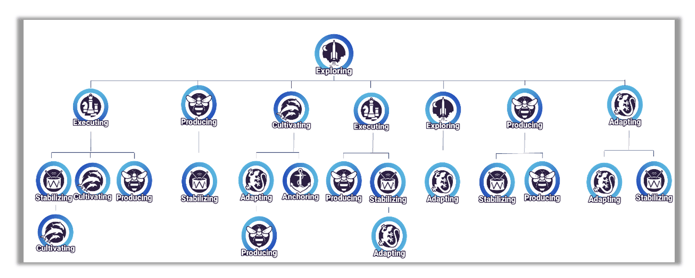
Motivation, retention, and business results
Working with PI in all our different people processes fuels and provides motivation, retention, and results for your employees.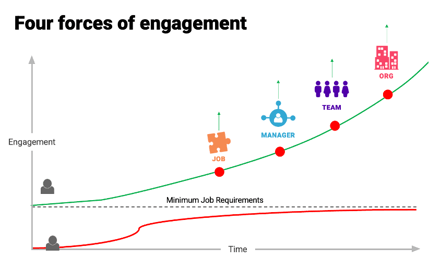
This will be an organization where:
- The right people are in the right roles where they are motivated and can leverage their natural strengths.
- Leaders lead employees as they want to be led and invest in their development.
- Teams have great dynamics and understand, collaborate, and work toward clearly stated priorities.
- The organization shows that it cares about its people and creates an environment where people can thrive.
Resulting in motivated people who stay, develop, and progress in the organization. Performing to their true potential and delivering the business results you want.
